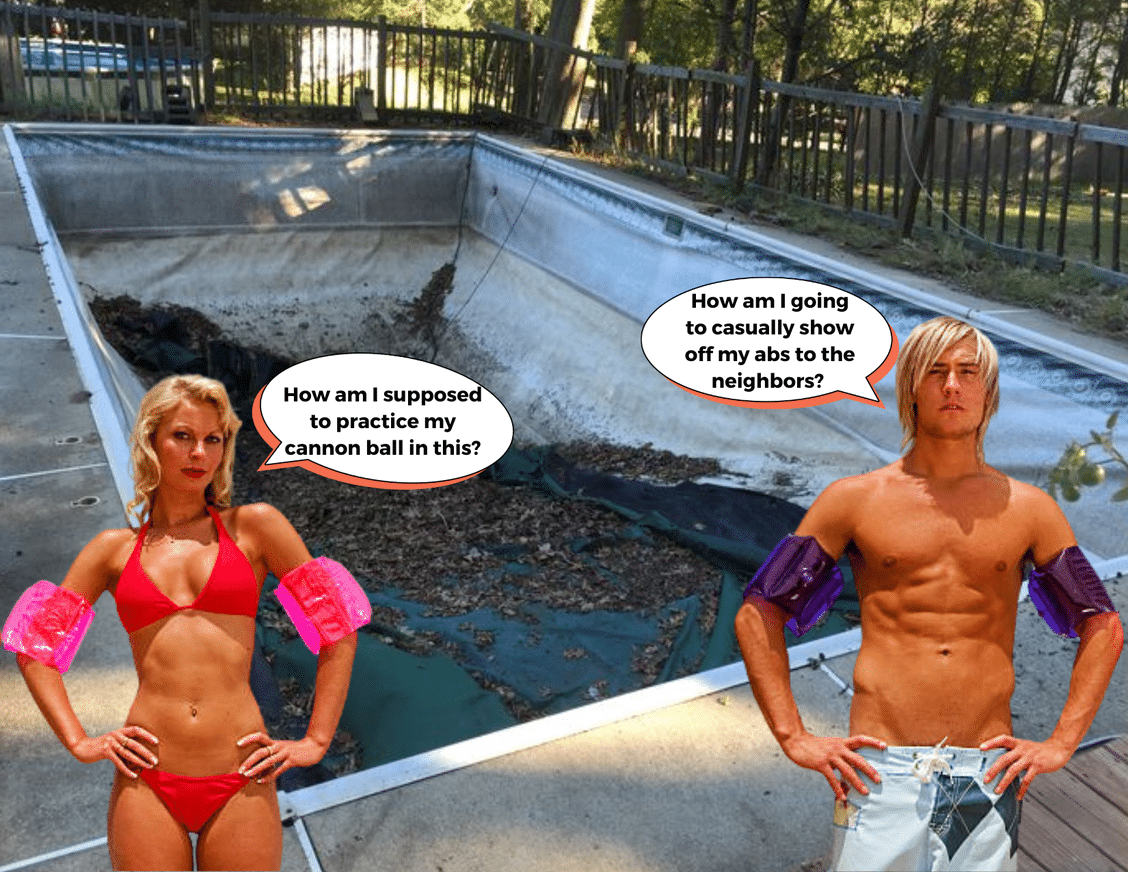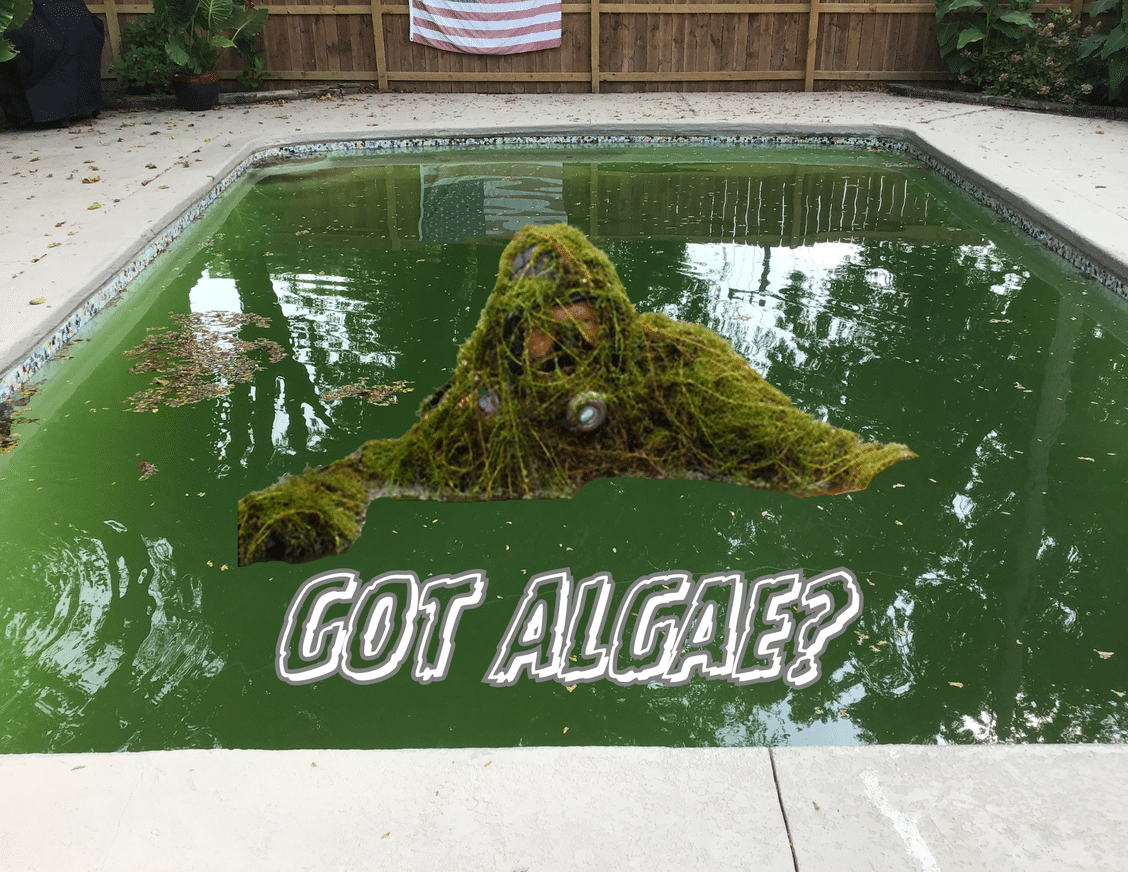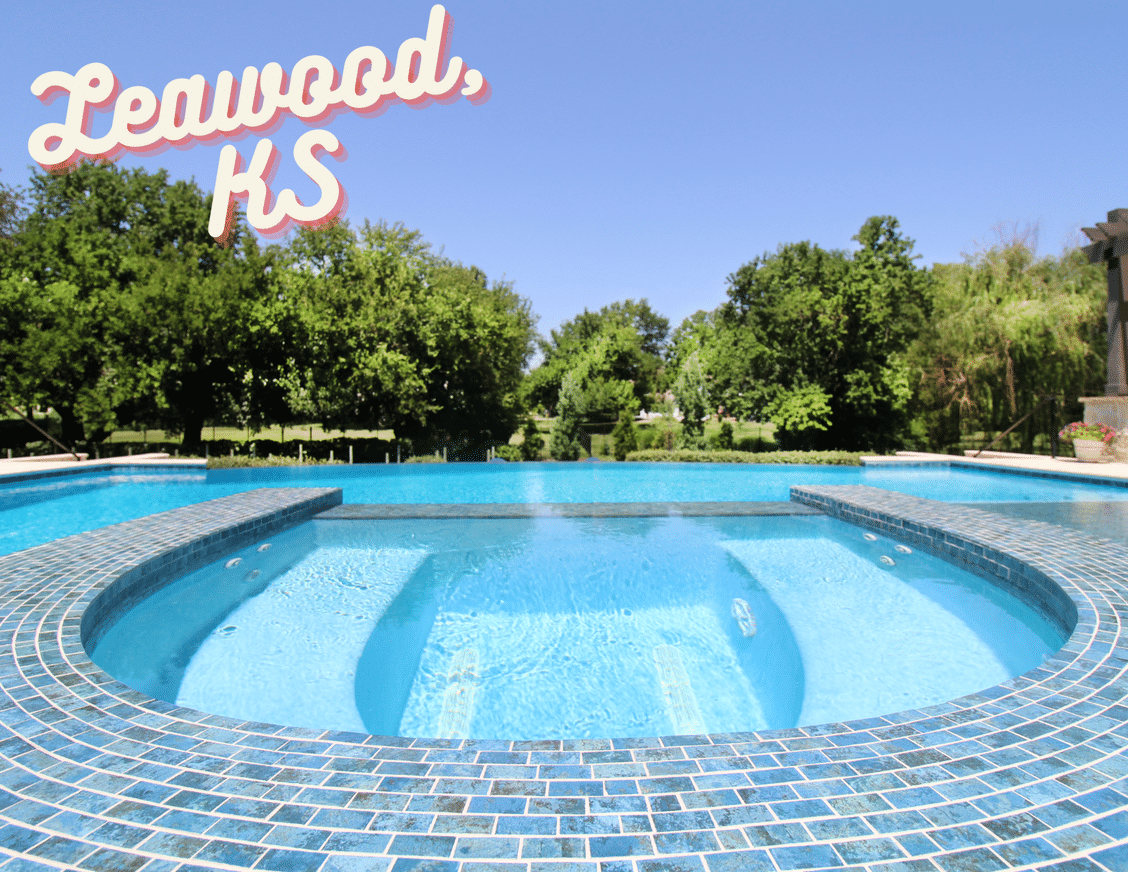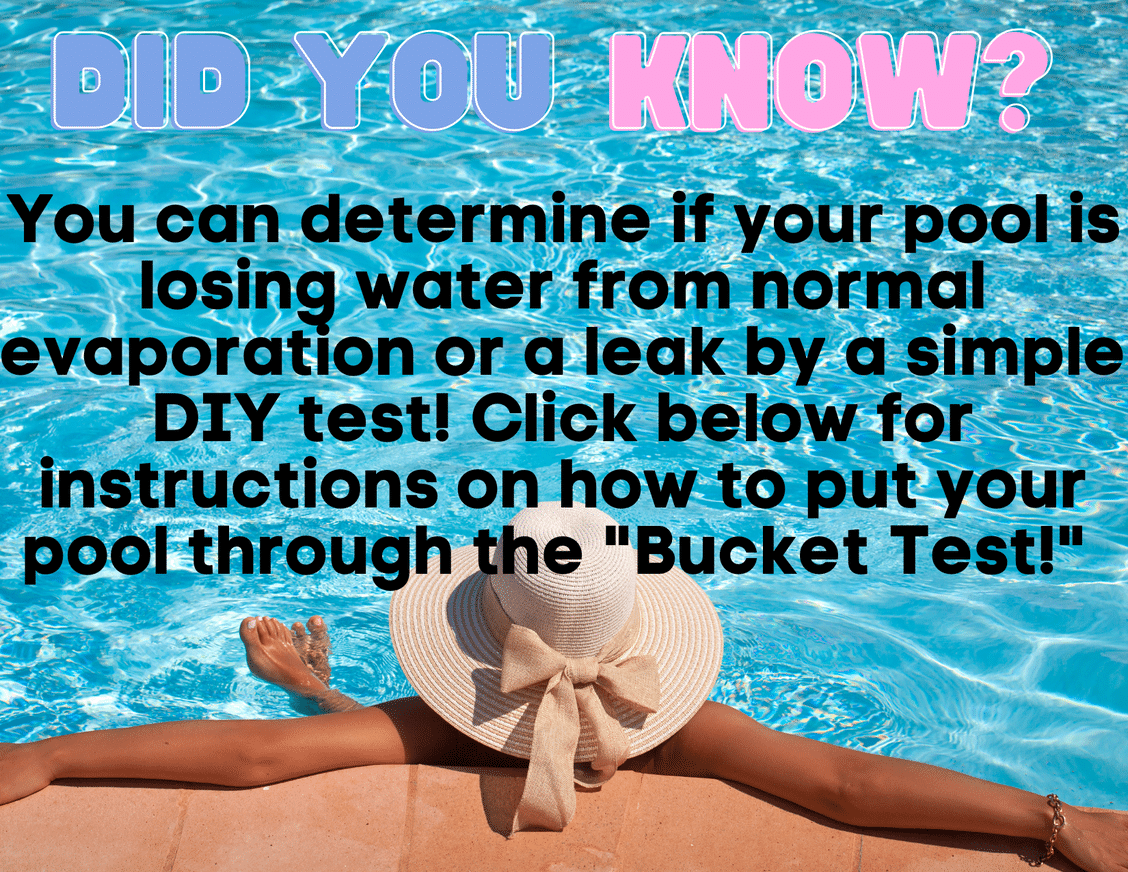Summer Is in Full Swing and We Are Here For It!
It’s finally pool season!! We hope you have been splashing, floating, diving, and cannonballing to the fullest this summer with little to no issues. Not the case? Not to worry! We are here for you. Keep reading for tips and tricks to keep your summer swim smooth, easy and vibing.
Caulk. Saving pools one expansion joint at a time. But what is it exactly? And on that note…what is an expansion joint? Let’s dive in! Caulking is a flexible sealant that is placed inside the expansion joint to help protect it and the surfaces around it. A pool can have multiple expansion joints, but the most important and common one is the gap between your pool coping and your pool deck. This gap is designed to separate your pool and pool deck and therefore prevent them from causing damage to each other due to expansion and contraction.
Pool Caulking
Concrete expands in warm weather and without the cushiony caulking inside the expansion joint, the deck and coping or pool shell could knock up against each other causing damage to both. It’s like the difference between bare knees hitting concrete or having the protection of knee pads.
Caulking also keeps debris from getting inside the expansion joint. If too much debris fill up the expansion joint, its as if there isn’t an expansion joint at all. Without the gap, the pool shell and deck or coping can expand into each other causing damage.
Lastly, caulk prevents water from trickling into the expansion joint. If this happens, it can freeze and expand during the winter months, pressing up against the tile band, causing cracks and pop offs. This can also damage the coping.
How long does caulking last? Typically five years, but it is important to keep an eye on it. If your caulk is worn or peeling, do not wait to get it replaced until the spring. Make sure to get caulk fixed before you close your pool to prevent ice from forming and creating costly pool damage.
Wish You Would’ve Called the Pool Company Sooner?
As always, lead times for pool work are long and summer is the busiest and most demanding time of the year for pool companies. The best way to make sure your pool is in good shape for pool season is to call ahead. In most cases, we would recommend calling an entire season ahead. For example, if you want to have your pool renovated in the spring, we’d recommend calling in early fall at the latest. The sooner you can call the better.
Sometimes it feels like problems arise suddenly and you need the work done quickly. This can happen! However, often your pool will show warning signs before any major issues occur. When is the best time to look for these warning signs? When you’re using the pool! Assess your swim. Does the surface feel rough on your hands and feet? Did your finger get cut on a broken tile? Toe stubbed on chipped coping? If so, it might be time to call a pool company and get on their schedule prior to the following pool season.
Stressed About Next Year’s Pool Budget?
Now is the time when many companies start budgeting for the 2024 season. Often you have to get multiple quotes for each item on the list, and that can be stressful! Who do you call? What work do you need to prioritize? What is the best product for your needs?
When figuring out who to call, the first thing you have to identify is your specific pool needs. Every pool company is different and has different areas of expertise. Some focus on leak locations, some replace vinyl liners, some do plaster resurfacing, some work specifically on cement decks and many do a variation of those services and more! If you know what you need, you can be directed to the right companies more quickly. Need to resurface your pool interior or replace your tile and coping? Click below!
Got Pool Algae?
Algae can be a real pain for pool owners and operators. It can be a tough problem to crack! The bad news? Algae spores are almost always in your pool and heat encourages their growth. They can be blown into the pool by debris or swimmers can have them on their suits. But do not panic!
It is only if you begin to see a visible colony that you have a problem. If this does happen, you need to look at the current conditions of the pool. Common causes of algae build up are poor water circulation, improper chemical balance, low or inconsistent chlorine levels, or a bad filter. Make sure you keep an eye on these throughout the summer and properly winterize your pool before shutting it down in the fall.
If you do notice visible algae growing inside your pool, there are a few things you can do to get rid of it. For small spots, use granular chlorine or a good algaecide followed by a stiff brushing. For larger colonies, you might have to shock the pool or bring in a pro.
A smooth pool surface also helps to prevent and get rid of pool algae. Algae can get inside the small crevices of a rough pool surface or chipped tile. If this happens, certain algae can extend roots into the surface which will wear it down and cause staining. Noticing your pool surface is rough to the touch? Algae might not be your only problem. Keep reading!
Is Your Pool Surface Causing Strawberries on Your Feet?
We’ve talked about this before. You’re not alone! If it is your first time in the pool, this is common. Your thin-skinned feet just need more pool surface exposure to build up a resistance! However, if you regularly swim in a pool and you are still coming out with strawberries, even after a few weeks of swims, this might be a sign that it is time for a new pool surface. Cement can be rough, even on the toughest feet, at first. But take a good look at your pool interior. Do you see chipping and cracks? Does it feel rough when you touch it? These are all signs that your pool surface is worn down and needs to be redone!
Curious What We’ve Been Up To?
Keep scrolling to look at a few of our completed jobs from this year!












